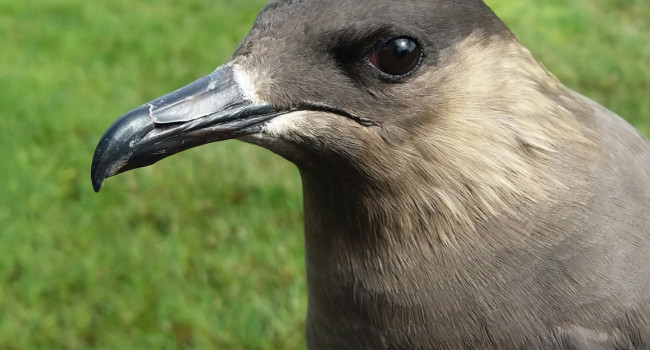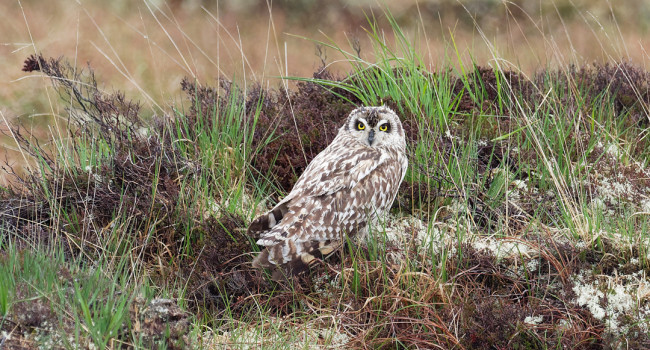John Calladine
Honorary Research Fellow
Following 22 years developing and leading BTO science relevant to Scotland, John retired as a member of staff in October 2022. John continues to research topics related to land management and studies of single and groups of species.
Interests & Responsibilities
- Extensive direct experience in applied conservation research and survey projects;
- Reviewing and interpretation of research and survey results and literature to inform conservation and policy;
- Practical land management issues and how they influence nature conservation interests.
John was responsible for BTO science in Scotland and for upland and forest related research. He also led two BTO focal research areas: Identifying realistic conservation strategies for breeding waders; Helping to plan forest expansion.
Studies include: (i) breeding birds and management of moorland, blanket mires and upland grasslands; (ii) development of bird communities in new woodlands (implications for re-wilding); (iii) examining bird-habitat relationships and the influence of different forest silvicultural treatments; (iv) breeding waders and high nature value farmland including machair; (v) influences of forest expansion on birds; (vi) development of survey methods for the monitoring of short-eared owls, waders and for birds of alpine habitats in Scotland; (vii) reviews of the populations of predatory birds and the ecology of urban gulls in Scotland; (viii) autecological studies of Short-eared Owl, Whinchat, Hawfinch and Arctic Skua; (ix) studies on the winter ecology of seed-eating birds; and (x) reviews of species on statutory general licence lists.
Other Information
An active bird ringer Honorary Lecturer in the School of Biological & Environmental Sciences, University of Stirling (since 2005)
Qualifications
BSc (Hons) Ecology, University of Lancaster, 1979-1982 MSc (by research) ‘Colony attendance, nest site selection and breeding performance in the Herring and Lesser Black-backed Gull: implications for conservation management’, 1993-95. Honorary Lecturer in the School of Biological & Environmental Sciences, University of Stirling (since 2005)
Recent BTO Publications
Other Publications
Calladine, J. 2004. Lesser Black-backed Gull. pp 226-241 in: Mitchell, P.I, Newton, S.F., Ratcliffe, N. & Dunn, T.E. (eds) Seabird Populations of Britain and Ireland. T.& A.D. Poyser, London.
Calladine, J., Baines, D. & Warren, P. 2002. Effects of reduced grazing on population density and breeding success of black grouse Tetrao tetrix in northern England. Journal of Applied Ecology 39: 772-780.
Calladine, J., Buner, F. & Aebischer, N.J. 1999. Temporal variations in the singing activity and detection efficiency of Turtle Doves Streptopelia turtur: implications for surveying. Bird Study 46: 74-80.
Calladine, J. 1997. A comparison of Herring Gull Larus argentatus and Lesser Black-backed gull Larus fuscus nest sites: their characteristics and relationships with breeding success. Bird Study 44: 318-326.
Calladine, J. 1997. The detection efficiency of color-banded Herring Gulls Larus argentatus and Lesser Black-backed Gulls Larus fuscus at the breeding colony: practical implications for the determination of adult survival rates. Colonial Waterbirds 20: 41-46.
Calladine, J. & Harris, M.P. 1997. Intermittent breeding in the Herring Gull Larus argentatus and the Lesser Black-backed Gull Larus fuscus. Ibis 139: 259-263
Calladine, J., Harris, M.P., Taylor, S. & Wanless, S. 1995. The status of the Eider on the Isle of May and other Forth islands. Scottish Birds 18: 1-10.
Harris, M.P. & Calladine, J. 1993. A check of the efficiency of finding colour-ringed Kittiwakes Rissa tridactyla. Ringing and Migration 14: 13-116.
Calladine, J., Dougill, S., Harding, N. & Stroud, D.A. 1990. Moorland birds on the Campsie Fells, Touch Hills and west Ochill Hills, Stirling: Habitats, distribution and numbers. Forth Naturalist and Historian 13: 3-69.







Share this page